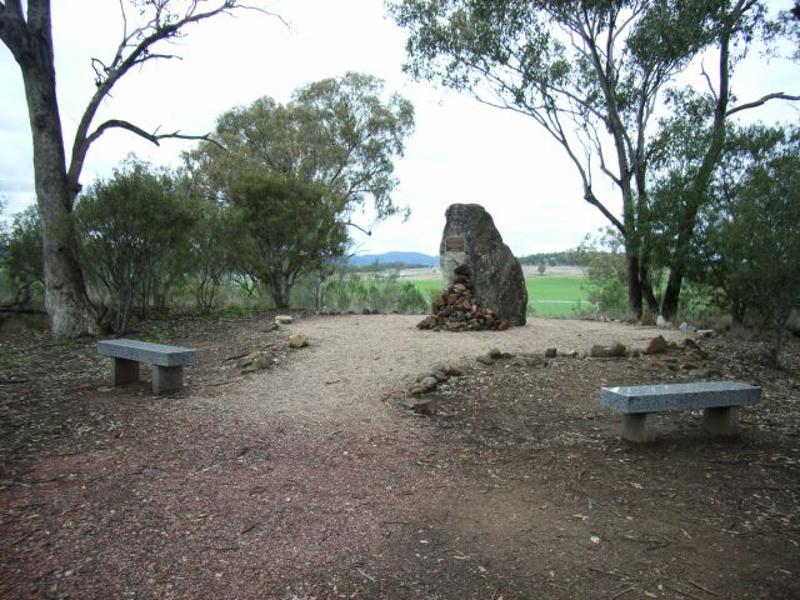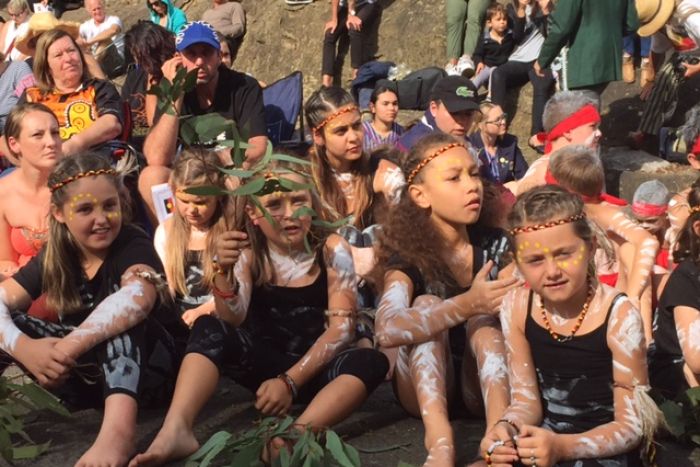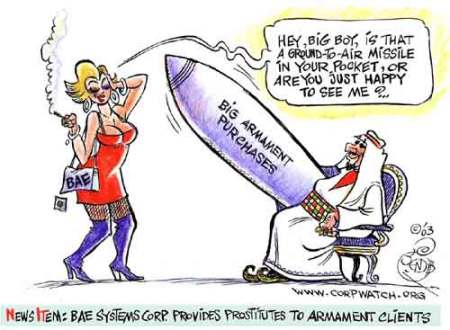‘Allusions in Beanland: two exhibitions at the Australian War Memorial’, Honest History, 21 March 2017
In September 2016, the War Memorial opened For Country, for Nation, an exhibition about Indigenous service in Australian defence forces from the Boer War till now. (There is also material on the Memorial’s website.) The exhibition will run till September this year then go on tour.
 Unidentified Indigenous serviceman, wearing a Field Ambulance armband, c. 1914-18 (AWM P12619.001/Dimond Studio)
Unidentified Indigenous serviceman, wearing a Field Ambulance armband, c. 1914-18 (AWM P12619.001/Dimond Studio)
A Ngunnawal welcome to Country is at the entrance to the exhibition and it sets the tone of the show:
For more than 2,000 generations we’ve taught our young people the warrior’s strength and the diplomat’s patience. Our ancient teachings continue even as they are adapted to modern times, and our people make great warriors and peacekeepers. Every time modern Australia has gone to war, our peoples have answered the call to fight for Country.
Is there more in those words than the Memorial usually allows to be said within its walls about Aboriginals who fight? Those ‘2,000 generations’ of warriors take us back way past the Boer War, well before ‘modern Australia’; Country today seems to be linked to Country back then. Have the Ngunnawal slipped something under the Memorial’s guard?
Probably not. Scattered through the exhibition there are other allusions that hint that something is going on, beneath the official Memorial stance that it is not the place to commemorate the Frontier Wars. (The latest research suggests more than 60 000 Indigenous Australians – men, women and children – died at the hands of settlers, soldiers, police, and native police between 1788 and 1928. Paul Daley has written about this in his ‘Postcolonial’ column in Guardian Australia and in his chapter in The Honest History Book, coming in April.)
Let’s look at some examples. Reg Saunders, Indigenous officer in World War II and the Korean War, is quoted in a caption as saying he fought not for the King of England but the King of Australia. England, he says, ‘tried to bloody destroy me, and my family, my tribe, my people’. His people defended Australia at that time, ‘and we suffered very badly for that – decimated to hell’. What is Captain Saunders getting at here?
Then there is a video of about 20 Indigenous men and women serving in the Australian Defence Force today, with some of the men dressed as traditional warriors.
Modern soldier, traditional warrior [the accompanying text runs] … Aboriginal and Torres Strait Islander peoples have served in the Australian military from the Boer War to the present day. Their warriors have protected Country since time immemorial and will continue to do so. (Emphasis added.)
There are the words of Garth O’Connell, Indigenous army reservist:
We came from a long-standing tradition of military service in this nation. The Anzac Legend Spirit comes out of this greater long service to our Country that’s been here for 40,000 years. Anzac is a modern incarnation of that spirit in defending our country. (Emphasis added.)
 Australian POWs, Stalag VIIIB, Silesia, c. 1942-45, including Indigenous soldier David Harris, second from left, middle row (AWM 045263)
Australian POWs, Stalag VIIIB, Silesia, c. 1942-45, including Indigenous soldier David Harris, second from left, middle row (AWM 045263)
So, there are references to warriors who were active well before Boer War. Then there is Shirley Macnamara’s intricate woven crucifix, which she made ‘in memory of the forgotten battlegrounds where spirits of warriors remain forever, to remind us of the battles fought at home; and for those who lay in a distant land never to come home’ (emphasis added). Nearby is Brodie McIntyre’s didgeridoo. ‘When I play didj I think of my Ancestors. When I do it for [the Defence forces], I think of my Ancestors, Aboriginal people, Torres Strait Islander people who have died and haven’t been recognised so far (emphasis added).’ Elsewhere in the show, there are mentions of ‘human rights abuses’ and Indigenous communities being ‘greatly affected by war and by British and Australian military activity’.
So, there are allusions and hints aplenty in For Country, for Nation, but very little detail (particularly by comparison with how the Memorial deals with Australia’s overseas wars). Even the most obtuse visitor should be left with questions: ‘Suffered’ how? ‘Decimated’, where and to what extent? Protecting and defending Country against whom? (There is a display of traditional weapons, but no indication of how they were used, particularly after 1788.) In ‘battles’ named what? How many people died or were injured? Or were the battles better described as ‘massacres’, given the relative kill counts, perhaps more than 30 Indigenous Australians dead for every one settler?
In other words, For Country, for Nation certainly recognises the Frontier Wars and settler attacks on Indigenous Australians but it does so in a back-handed fashion, which mostly slides over the key point about battles and wars (that they kill people) and about what happens when well-armed settlers, police and soldiers come up against Aboriginal people (many more of the latter – men, women and children – die than the former). This, presumably, is an example of ‘the diplomat’s patience’, making a point in a way that will not upset anyone much. Or is it, perhaps, how the Memorial draws the line between recognising and commemorating?
Why should Indigenous Australian efforts to defend Country – not just Australia since the Boer War but their Country, as pink-skinned invaders muscled in – have to be soft-pedalled in this pusillanimous way? Why does Indigenous diplomacy have to protect us from the detailed stories of Indigenous warriors and why they fought? Can defending Country at home only be recognised to the extent that it can be presented as a precursor to uniformed service after 1901? Does this limitation belittle not just the act of recognition but Indigenous Australians as a whole? Why should the massacre stories passed down through Indigenous families not be told to the Memorial’s largely white Anglo-Celtic visitors? Is it simply to avoid embarrassing or upsetting them?
On 3 March, the Memorial added to the exhibition when Director Brendan Nelson unveiled the $366 000 acquisition, ‘Ruby Plains Massacre 1’, by Kukatja-Wangkajunga artist Rover Thomas (Joolama). (The auction house, though not the Memorial, has told Honest History that the Memorial was the successful bidder and at that price. We asked the Memorial how this price compared with prices paid for other works in the Memorial’s collection but there was no response.) The painting depicts the reprisal killing of Indigenous Australians by Western Australian settlers early in the 20th century. Dr Nelson and Indigenous service spokesperson, Squadron Leader Gary Oakley, framed the painting as an indication of the high value Indigenous people placed on fighting for Australia, despite the wrongs done to them by settlers. The explanatory panel next to the painting takes the same line:
The Ruby Plains Station massacre and many similar violent, tragic confrontations in the course of Indigenous dispossession are estimated to have resulted in the deaths of 20,000 Indigenous people through the 19th and early 20th centuries. That Aboriginals and Torres Strait Islanders volunteered to fight for the young nation which had taken so much from them speaks to their extraordinary resilience and urge to serve Australia.
 Myall Creek Massacre memorial (Heritage Office of NSW/Tracey Appel)
Myall Creek Massacre memorial (Heritage Office of NSW/Tracey Appel)
The Memorial’s website also recognises the Frontier Wars (here and here). What is new, though, in how ‘Ruby Plains Massacre 1’ is presented is the emphasis on the magnanimity of Indigenous Australians: they fought for Australia despite what Australia had done to them; they maintained the ‘urge to serve’. This extends the ‘continuity of service’ trope in the rest of the exhibition. Yet, if the desire to serve, to defend Country, is the same now in 2017 (and since 1901) as it was in colonial times, and is recognised as such, it could reasonably be asked: Why is Indigenous defence of Country in colonial times not commemorated in the same way as Indigenous defence of Country now?
Beyond all of the above, the exhibition is the usual highly competent War Memorial effort, with a stress on individual stories and the efforts of Indigenous servicemen and women in Northern Australia, then and now. (There is nothing, though, about the role the Australian Defence Force played in the 2007 intervention in Northern Territory Indigenous communities, a significant – and some people argued, inappropriate – military interface with Indigenous Australians.) Highlights include a large set of woven medals by Glenda and Marilyne Nicholls, a video of dancers from Badu Island, and some paintings in traditional style. The impact of the Maralinga nuclear tests on Indigenous access to Country is briefly noted, alongside some symbolic glasswork.
The experience of Indigenous women marrying white servicemen is represented by Julie Dowling’s painting, ‘The dance’, with her grandparents close together in the foreground and the racist whisperers behind. On the other hand, Charles Mene and Oodgeroo Noonuccal (Kath Walker) are said to have joined up in World War II to improve their personal lot, and perhaps that of their people. The Great War story of Douglas Grant is told, with the euphemistic word ‘battle’ applied to the event where he was taken from his family as a child; most sources use the word ‘massacre’.
Of course, it is beyond time that we recognised Indigenous service in uniform and owned up to – recognised, again – the ill-treatment of Indigenous returned men and women. (Tony Albert’s four panel work, ‘Coloured Diggers’, hits home.) But there is a risk that the more effort settler Australia puts into assuaging its guilt about being cruel to Aborigines in uniform – and into making much of Aborigines’ ‘urge to serve’ – the more it gives itself an excuse to shove the much bigger story of frontier wars and massacres further down the memory hole, with a muttered ‘Best We Forget’. Is this what Indigenous Australians want?
As Paul Daley writes in The Honest History Book, ‘The memorial has, I believe, occasionally used the black Diggers narrative as a fig leaf to distract from its intransigence on the Frontier Wars’. With the addition of ‘Ruby Plains Massacre 1’ to For Country, for Nation, the fig leaf has become considerably more expensive and the knots the Memorial ties itself into (trying to distinguish between recognising and commemorating) have grown more and more tangled.
The Memorial’s contracted curator and team have done some delicate work on the allusions in this exhibition – presumably under close supervision – but we should in 2017 be able to handle a more honest and balanced presentation than For Country, for Nation ends up being. Greater honesty about the Frontier Wars in this temporary exhibition would not have committed the Memorial to permanent Frontier Wars commemoration but it might have been cathartic. It might even have confirmed that the Anglo-Celtic dominated, insular Australian world does not collapse if we fully admit to ourselves that parts of our history are shameful.
 Children in April 2016 commemorating 200 years since the Appin Massacre (ABC News/Jean Kennedy)
Children in April 2016 commemorating 200 years since the Appin Massacre (ABC News/Jean Kennedy)
* * *
The Reg Saunders Gallery is adjacent to the Indigenous service exhibition, and here there is an interesting wall under the heading ‘A home on a Southern hill’, a line from a poem by war artist Will Dyson, whose work is otherwise hard to find in the Memorial. Bean’s original plan, displayed here, shows a space reserved for Dyson’s sketches. Also displayed are some of the original Crust-Sodersten designs for the Memorial, showing the cruciform floor plan more clearly than is now the case with the more recent accretions to either side and the rear.
These items are the first of a series of small exhibitions to be run during 2017, the forthcoming ones under the headings ‘To heal a nation’, ‘Telling their stories’, and ‘Memorial in landscape’. ‘Telling their stories’ looks like repeating the Memorial’s custom of over-attributing Charles Bean: it ‘considers the ways in which Bean’s experiences shaped his vision for the Memorial’ (emphasis added). Of course, Bean was important, but he was by no means the only visionary nor the only builder, as Michael Piggott’s chapter in The Honest History Book makes clear.
The Memorial has always been pulled in different directions, as For Country, for Nation shows. Some things are constant, though. Just off the Reg Saunders Gallery is the BAE Systems Theatre, named for the world’s third biggest arms company (2014), which is also a significant donor to the Memorial. (Naming rights for the theatre have been part of the deal since 2008: see below.) While we browsed the Bean exhibition, uniformed ADF personnel arrived for a function in the theatre – ‘a private function’, a Memorial staff member told a thongs-wearing tourist who had wandered into the theatre (he left obediently) – followed by Director Nelson.
These comings and goings seemed symbolic of what we might call the military-industrial-commemorative complex: the arms maker provides, the ADF disposes, the Memorial commemorates, in a continuous cycle, though it is sometimes unclear which comes first. Australia’s normalisation of war can be viewed from many angles. Regardless, the public (or at least some of it, about four per cent of our total population in any one year) has always been around, in socks and sandals or nowadays in thongs, eager to take it in.
 The company we keep. BAE corporate relations techniques c. 2006 (weaponsoutofwarwick). The Memorial’s Annual Reports show its theatre has been the ‘BAE Systems Theatre’ since 2008. More on BAE below (weaponsoutofwarwick) and here.
The company we keep. BAE corporate relations techniques c. 2006 (weaponsoutofwarwick). The Memorial’s Annual Reports show its theatre has been the ‘BAE Systems Theatre’ since 2008. More on BAE below (weaponsoutofwarwick) and here.
The Guardian first disclosed in 2003 how the company [BAE] operated a £20-million slush fund to “entertain” Saudi princes who might favourably influence its chances of winning the “al-Yamamah” deal to buy warships and fighter jets. “Allegations include the provision of prostitutes, sports cars, yachts, first-class plane tickets, Mercedes cars with drivers, unlimited restaurant meals, cup final tickets, club memberships, gambling trips, TV sets and sound systems.” An internal BAE security report referred to allegations of “sex and bondage with Saudi princes”.
Allegations have surfaced from investigations by the Guardian, BBC’s Newsnight and the Serious Fraud Office; they found that bribes totalling £1bn were paid to the Saudi Prince Bandar by BAE systems in return for the £43bn Al-Yamamah arms deal, in which BAE systems sold Tornado aircraft to Saudi Arabia.


Leave a Reply
You must be logged in to post a comment.